A country worthy of admiration.
Japan is one of the most unusual places on Earth, where centuries-old traditions harmoniously coexist with all kinds of innovations. Residents of the Land of the Rising Sun skillfully use all the benefits of civilization, without violating the established rules, reports with reference to ADME.
We never cease to be amazed at what is happening in this unique country, and found 16 reasons why we always admire it.
Tokyo is the safest metropolis in the world
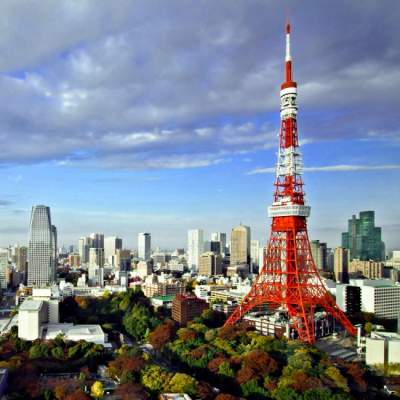
Research Center The Economist Intelligence Unit has published a ranking of the safest cities in the world. When compiling it, indicators such as information and personal security, health protection and the state of urban infrastructure were taken into account. On the aggregate of all indicators, Tokyo took 1st place, Singapore was 2nd, and the 3rd was again a Japanese city, namely Osaka.
Detailed instructions
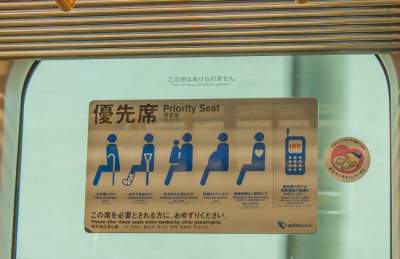
In Japan, there are instructions and pointers everywhere, which even foreigners can understand, since the text is often duplicated in English and accompanied by pictures.
Japanese children have a common birthday
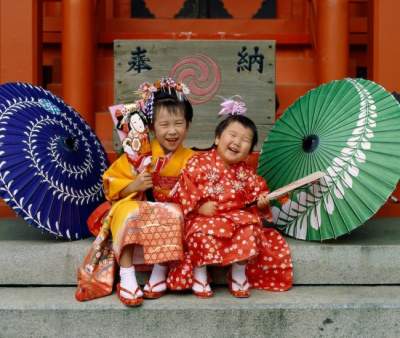
On November 15, for everyone who turned 3, 5 or 7 this year, a big celebration of Siti-Go-San is held, which means "seven-five-three". Odd numbers are considered magical in Japan, and the age corresponding to them symbolizes important, turning points of growing up.
Collective charging
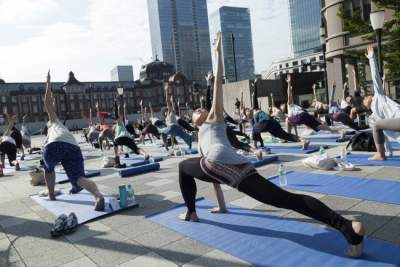
Schoolchildren and employees in most companies start their workday with exercise or yoga. This tradition has existed since 1928 and is supported in every possible way, since it not only improves the well-being of workers, but also contributes to their rapprochement. In a collective country like Japan, this is of paramount importance.
"Premium Friday"
It is no secret that in Japan almost all working people suffer from overwork, as they are late at work every day, sometimes for 2-3 hours. To combat this phenomenon, the government has adopted a program called Premium Friday. Now, every last Friday of the month, workers will be able to go home a few hours earlier. The first who decided to take advantage of this opportunity (and at the same time set an example for his fellow citizens) was the Minister of Economy Hiroshige Seko - after work he went to play curling.
Companies with a thousand-year history
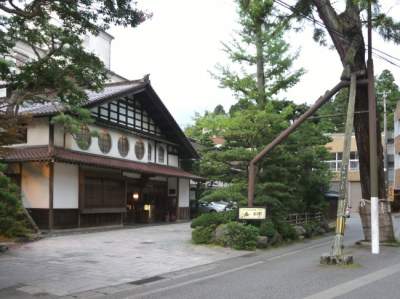
Ownership is strictly enforced in Japan, which is why there are old companies like the ryokan (traditional Japanese hotel) Hoshi. This hotel has been in continuous operation since 718 and has been run by the same family for 46 generations.
Fairy sanctuaries for animals
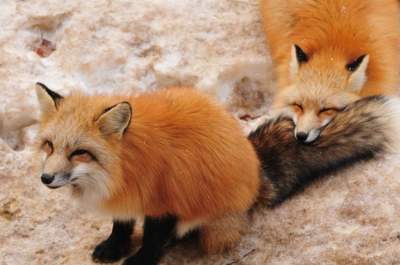
Among such places is the Zao Fox Village, located in Miyagi Prefecture on the island of Honshu. Wild foxes live there, which everyone can visit and feed, except (for obvious reasons) very young children.
Ultra-fast road repair
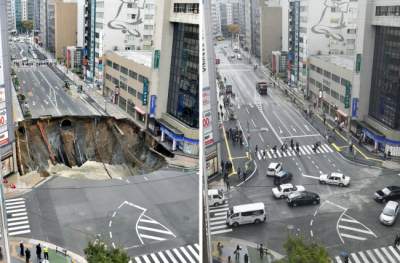
In 2014, in the city of Fukuoka, on one of the streets, a huge pit 15 meters deep was formed. In all likelihood, the sinkhole was caused by the construction of the subway, but fortunately no one was injured during the collapse. It is hard to believe that it even took place, as the hole was removed in just 48 hours, which greatly surprised Internet users around the world.
Caring employees of repair services
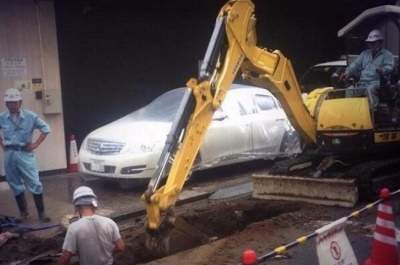
For example, these road workers covered someone else's car with tape so as not to stain it during work.
Maximum convenience in a minimum footprint
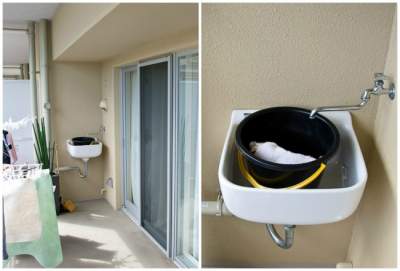
As a rule, the Japanese live in small apartments, but in all new houses on the balconies there are sinks with supplied water. This is done to make it easier to care for the flowers.
Attention to detail
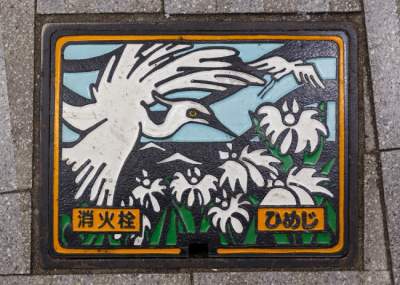
Even to such as manholes. Some of them look no worse than museum pieces.
Bullet Trains
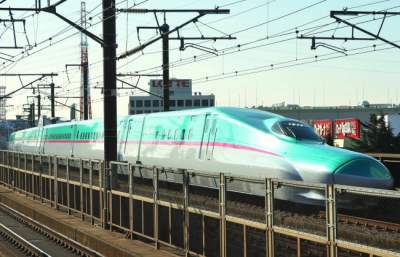
The high-speed Shinkansen trains are called bullets for a reason. They can reach speeds of up to 300 km / h and allow residents of remote cities to get to work or school on time. As you know, being late in Japan is not welcome, even if it is not the fault of the latecomer.
Alert system built into all mobile phones
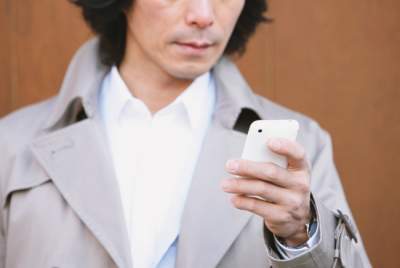
In addition to the nationwide J-Alert alert system, which allows authorities to alert the public through the media and loudspeakers, Japan uses an SMS alert system. It is built into all modern cell phones, and in the event of an emergency, local authorities need 4 to 20 seconds to send a message to the residents of the region with it.
Incredible culinary variety
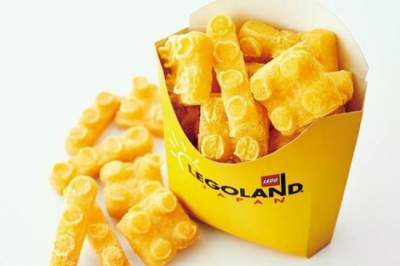
In Japan, you can find anything from traditional okonomiyaki flatbreads to a sakura-flavored chocolate bar. And very soon, a cafe for Lego fans will open, where you can taste food that looks just like the parts of a constructor - which, however, does not make it less tasty.
Vegetables look like works of art
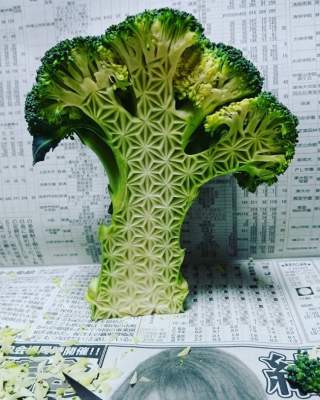
In Japan, the art of mukimono is highly valued, that is, artistic carving on vegetables and fruits, or carving. Each region of the country has its own mukimono plots, and for its creation they use the "Hocho" knife (it was originally used for cutting seafood) and special stencils.
Moscow, July 31 - "Vesti.Ekonomika". Productivity is one of the key drivers of economic success. The more productive a country is, the more money it can get, the richer its nation becomes.
Experts analyzed data from 36 largest countries in the world, and then made a rating.
Our country took 34th place, that is, the third place from the bottom, thus becoming one of the least productive countries.
Below are the top 19 most productive countries in the world.
19. Israel
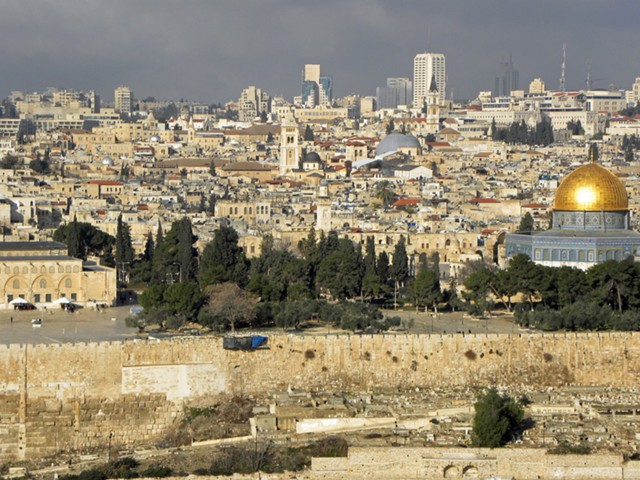
Israel is gaining popularity as an innovation hub. Workers work here an average of 1,889 hours per year.
It is an industrial country with a dynamically developing economy. Israel is considered one of the most developed countries in Southwest Asia in terms of economic and industrial development.
Israel is the second largest country in the world after the United States in terms of the number of newly formed companies and has the largest representation on the NASDAQ list of companies outside of North America.
18. Japan
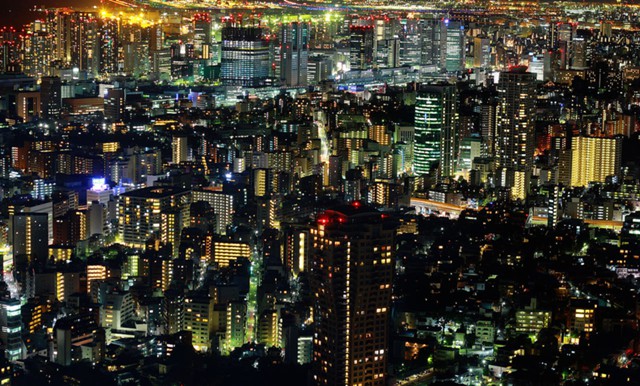
Japan is experiencing an experiment in negative interest rates.
There is a high level of public debt to GDP. Another characteristic black Japanese economy is an aging population.
As a great economic power, Japan ranks 3rd in the world in terms of nominal GDP and 4th in terms of GDP calculated in purchasing power parity.
Japan is the 4th largest exporter and 6th largest importer.
17.UK
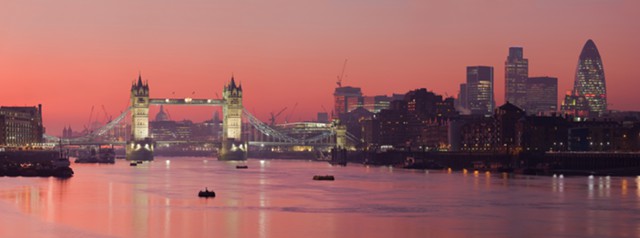
The UK economy is already experiencing the negative effects of a referendum that decided to leave the EU.
The fall in the pound sterling has led to higher inflation and lower wages.
Last year, productivity in the country was $ 24.43 per hour.
The British service sector is the main sector of the country's economy, accounting for approximately 75% of GDP.
London, one of the three "control centers" of the world economy, is the largest financial center on a par with New York and the largest urban GDP in Europe. Edinburgh is also a major European financial center.
16. New Zealand
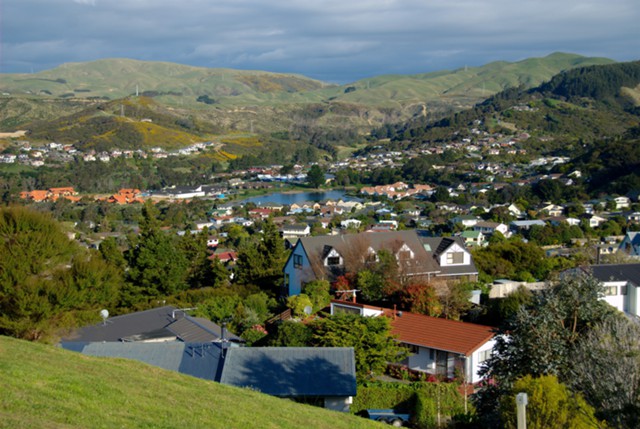
New Zealand is a developed country with a market economy system based on agriculture, manufacturing and food industries and tourism.
The country's economy has an export orientation. The main trading partners are Australia, USA, Japan, China.
15. France
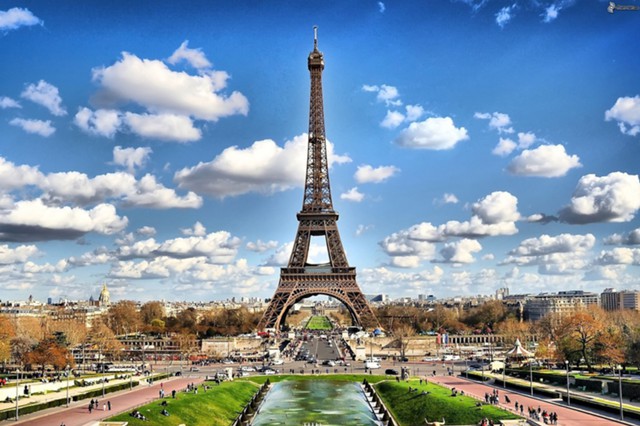
France has fewer working hours per week than the UK, but this translates into more GDP per hour than the UK.
The country's new president, Emmanuel Macron, plans to carry out labor reform in the country.
France is a highly developed industrial-agrarian country, occupying one of the leading places in the world in terms of industrial production.
France enjoys its natural advantages, ranging from its central geographical position in Europe to the possession of access to the main trade routes of Western Europe: the Mediterranean Sea, the English Channel, the Atlantic.
14. Canada
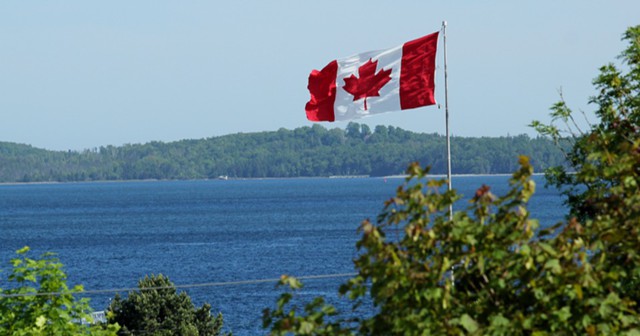
On average, Canadians work 1703 hours a year. This means that Canada is outperforming the United States in terms of productivity.
Canada is one of the richest countries in the world with high per capita incomes and is a member of the Organization for Economic Cooperation and Development (OECD) and the G7.
Canada is unusual among developed countries due to the importance of its resource sector, in which the timber and oil industries are the most important industries.
13. Finland
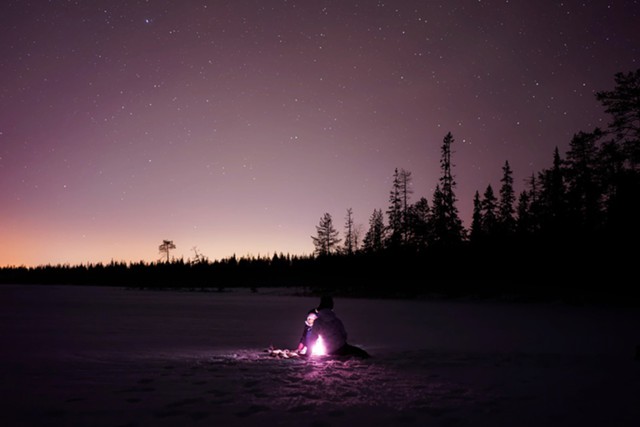
Finland is one of the small, highly industrialized countries. Its share in world production is small - 0.4%, in world trade - 0.8%.
Finland is one of the leading countries in the world in terms of GDP per capita.
According to a 2014 study by the OECD, the Finnish school system is the most cost-effective among industrialized countries.
12. Austria
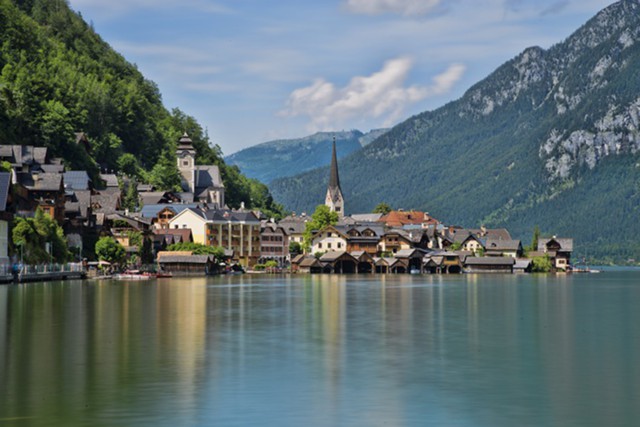
On average, 1601 hours a year work here.
Austria is a developed industrial and agricultural country. It is one of the most developed countries in Europe.
Approximately 2.2% of GDP is produced in agriculture and forestry, 32.3% - in industry, energy and construction, 65.5% - in services, trade, transport and communications, in the banking and insurance system.
One third of the volume of industrial production falls on the state sector of the economy.
11. Germany
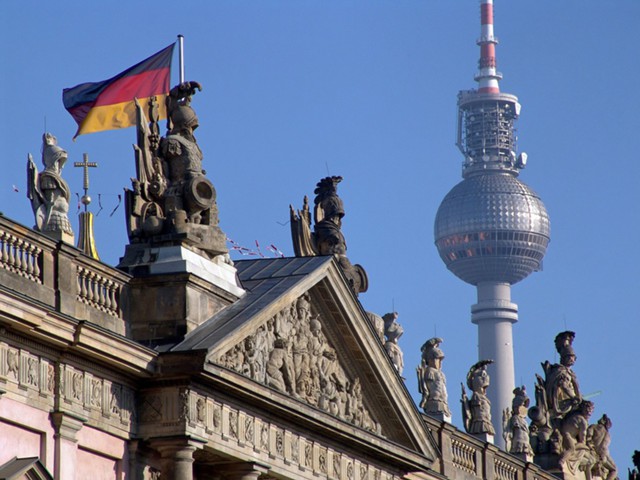
Germany is a great power with a dynamically developing economy. It is the second most productive country among the G7 countries.
Its economy is predominantly concentrated in the manufacturing and service sectors.
In addition, Germany occupies one of the leading places in the world in terms of export volumes.
10. Sweden
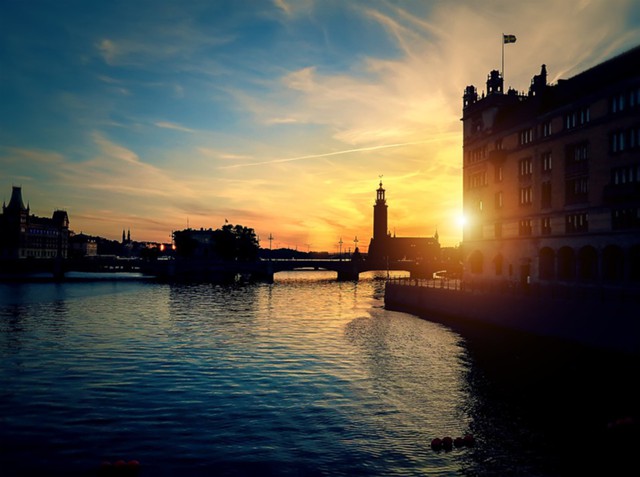
With a population of only 9 million, Sweden has 50 global companies, including ABB, Atlas Copco, Oriflame, Saab AB, Saab Automobile AB, Scania, Volvo, Volvo Trucks, Ericsson, TELE2, AB Electrolux, TetraPak, Alfa Laval, SKF, H&M.
It is in the first place in the production of bearings. The country has a high level of innovation, a highly developed and constantly modernized infrastructure, excellent state of the art, well-educated staff who speak English.
Almost 60% of GDP comes from taxes, the highest in the OECD.
9. Netherlands
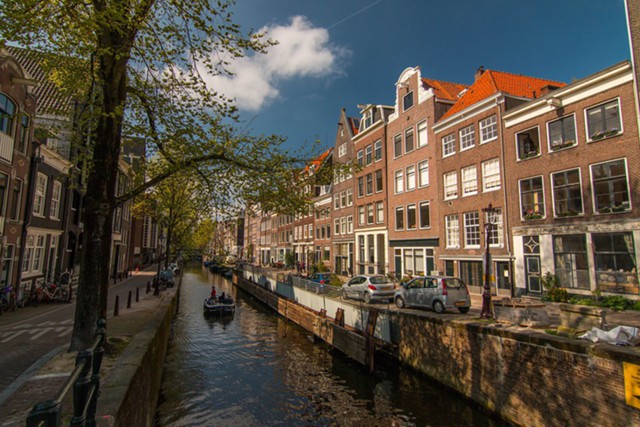
The economy of the Netherlands country is the 47th largest in the world.
The Netherlands has a modern, highly developed post-industrial economy.
The Netherlands is home to the headquarters and production facilities of such multinational and European companies as VimpelCom, Royal Dutch / Shell (petrochemicals), Unilever (household chemicals and food), Royal Philips Electronics (electronics).
The leading positions in the global economy are also held by the largest Dutch companies and multinational corporations based in the Netherlands.
8. Ireland
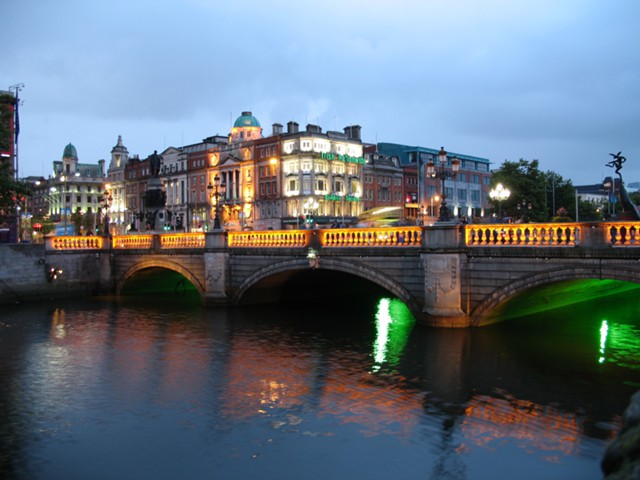
The Republic of Ireland's economy is a modern, relatively small, trade-dependent economy.
The agricultural sector, once dominant in the system, is now being replaced by an industrial sector; the industrial sector accounts for 46% of GDP, about 80% of exports and 29% of the labor force.
While exports remain the main driver of Ireland's growth, development is also driven by higher consumer spending and a recovery in both construction and business investment.
7. Australia
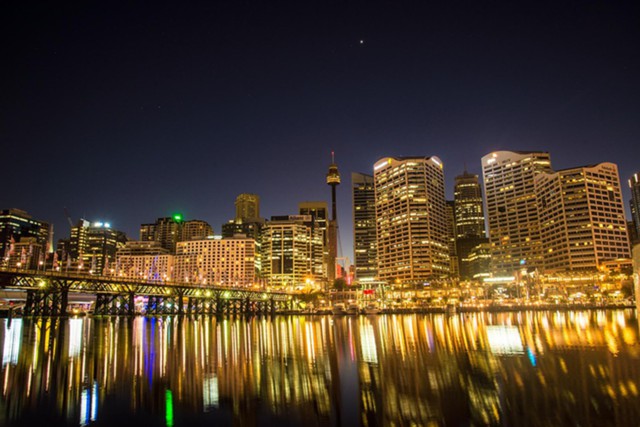
Australia is one of the developed countries, being the thirteenth largest economy in the world and the sixth largest in the world in terms of GDP per capita.
Australia's economy is one of the largest economies in the world with a GDP of $ 1.57 trillion.
The Australian economy is dominated by the service sector, which accounts for about 68% of GDP.
The mining sector accounts for 10% of GDP; the sectors of the economy related to the extraction of minerals account for another 9% of GDP.
6. USA
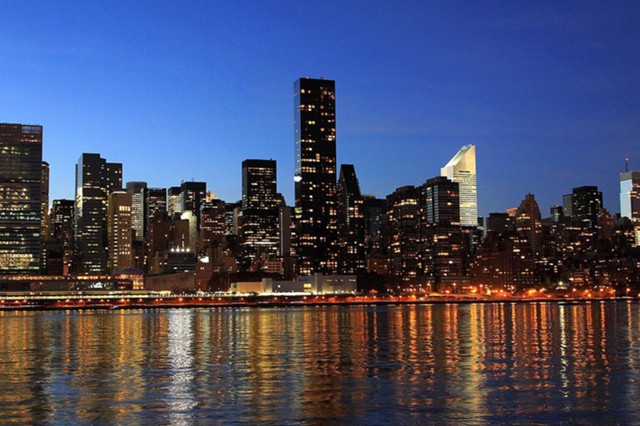
The United States is a highly developed country with the world's first economy in terms of nominal GDP and second in terms of GDP (PPP).
Although the country's population is only 4.3% of the global population, Americans own about 40% of the world's total wealth.
The United States leads the world in a number of socio-economic indicators, including average wages, HDI, GDP per capita, and labor productivity.
While the US economy is postindustrial, dominated by the services and knowledge economy, the country's manufacturing sector remains the second largest in the world.
5. Iceland
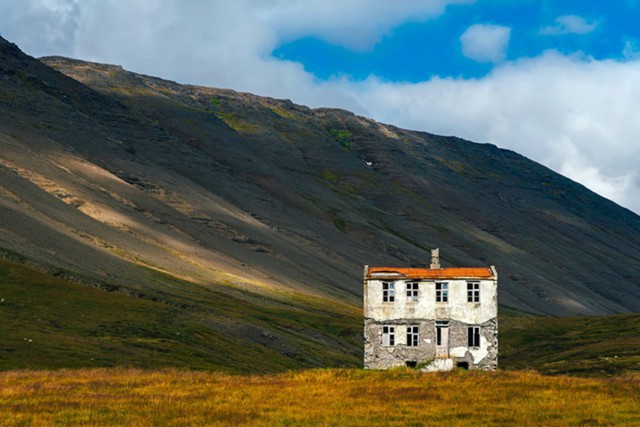
The Icelandic government has announced a massive program to build aluminum smelters.
Biotechnology, tourism, banking, and information technology are also actively developing.
In terms of the structure of employment, Iceland looks like an industrialized country: 7.8% are employed in agriculture, 22.6% in industry, and 69.6% of the working population in the service sector.
4. Denmark
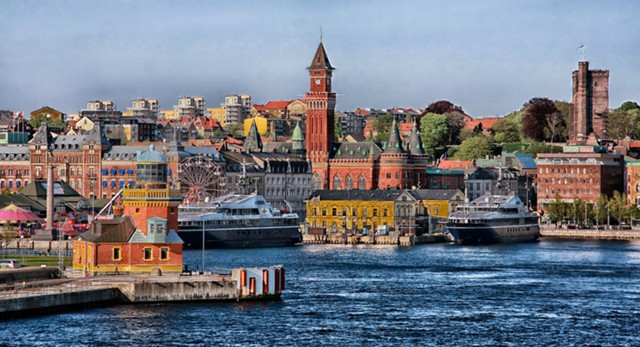
Denmark is an industrial-agrarian country with a high level of development. The share of industry in the national income is over 40%.
The country ranks first in the world in terms of foreign trade turnover per capita.
3. Switzerland
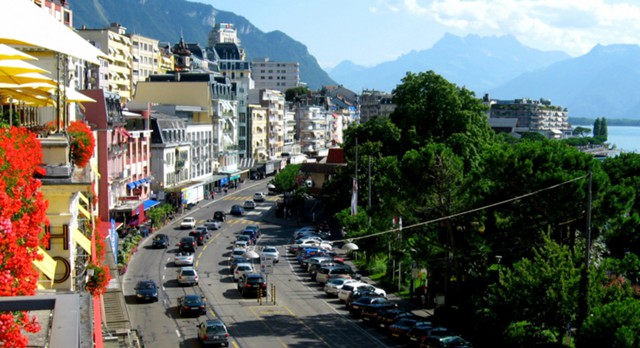
Switzerland's economy is one of the most stable in the world.
The pursued policy of long-term monetary security and banking secrecy has made Switzerland the place where investors are most confident in the safety of their funds, as a result of which the country's economy is becoming increasingly dependent on constant inflows of foreign investment.
Due to the small territory of the country and the high specialization of labor, industry and trade are the key economic resources for Switzerland. Switzerland is the world leader in gold refining, processing two thirds of the world's gold production.
2. Norway
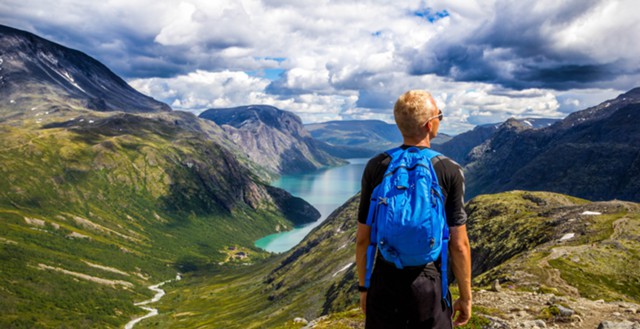
Norway is the largest producer of oil and gas in Northern Europe.
Hydropower covers most of the energy needs, allowing most of the oil to be exported.
Oil funds serve to develop future generations.
The country has significant mineral reserves and a large merchant fleet.
Inflation (3%) and unemployment (3%) are low compared to the rest of Europe.
1. Luxembourg
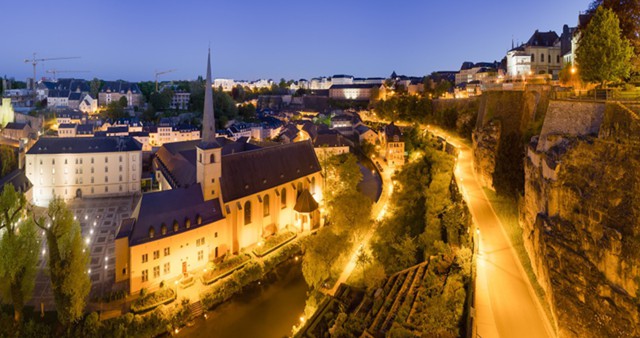
Luxembourg is one of the richest countries in Europe with the highest living standards.
Many EU organizations are located in Luxembourg City.
Thanks to favorable conditions and an offshore zone, the capital hosts about 1,000 investment funds and more than 200 banks - more than in any other city in the world.
Of the 127 million inhabitants of the islands, 107 are Shinto, 90 are Buddhist, about 25 are traditional forms of Christianity, and about 90 million are other.
There is no mistake in the calculations, just the Japanese attitude to religion is somewhat reminiscent of the approach of Benny Gabor, the hero of the movie "The Mummy", who wore a cross around his neck, a six-pointed star and other signs of all confessions known to him. As the saying goes, "just in case." It is considered perfectly normal in Japan to celebrate Shinto, Buddhist and Christian holidays. However, Shinto remains the key religion with its worship of spirits and the deification of natural forces. It turns out that Japan is the only developed country in the world in which the establishment and the majority of the population profess paganism.
The emperor is the main symbol of the Japanese state and the unity of the nation. But if in England the queen is only the head of the Anglican Church (as the Russian emperor was the head of the Orthodox Church), then the Japanese sovereign himself has a divine origin: he descends directly from the sun goddess Amaterasu. These may be fairy tales, but the imperial house of Yamato Country is the oldest in the world.
What is the strength?
The Japanese air carrier JAL has a bonus that few Russian travelers know about. When buying a ticket on the Moscow - Tokyo - Moscow route, you can get a free roundtrip ticket to any Japanese airport of your choice where the airline flies. A good reason to go to a place where a foreign tourist rarely steps. For example, in Izumo, to visit the so-called "centers of power" - ancient temples and sanctuaries, where hardworking Japanese are charged with sacred energy.
Izumo-taisha is a temple that occupies a special place in Shinto. Until the end of the 19th century, Japan lived according to the lunar calendar. In it, each month was called intricately and poetically: a month of rice crops, admiring the moon, chrysanthemums ... But the tenth had a frightening designation - a month without gods. According to Shinto, once a year all the deities of the Japanese islands leave their homes and gather at one point, in the Izumo-taisha temple.
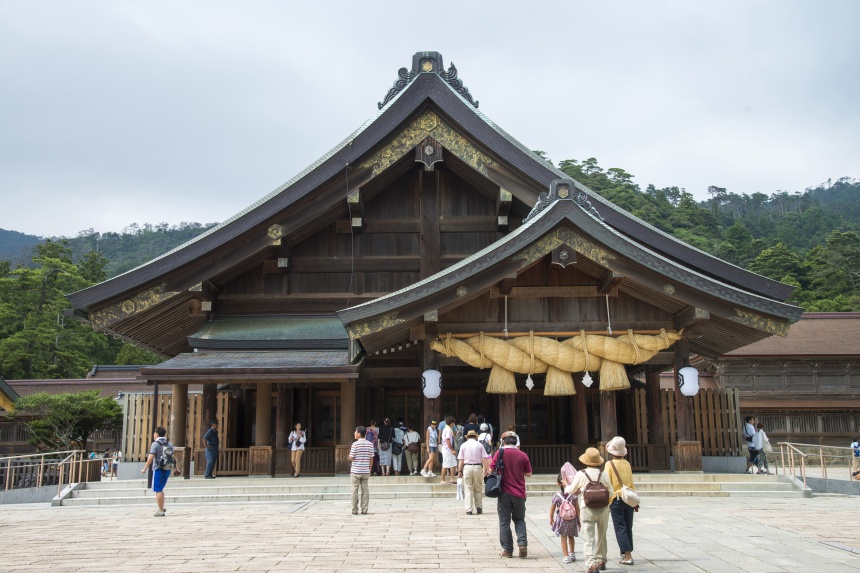
When the first sanctuary appeared here is unknown even approximately. Izumo-taisha is possibly the oldest temple in Japan. At least that's what local sources say. However, no one is going to refute them. People come here for something else. In recent years, the Japanese have become more interested in national roots, traditions and national spiritual practices, and Shinto is the oldest tradition and practice.
Since there are very few foreign tourists in Izumo-taisha, the attitude towards them is emphasized friendly. Yoshiro Takada, international department manager of a large corporation, seeing a white tourist, politely asks in good English:
- Do you need help?
This is not an idle question: most of the inscriptions and information materials are not duplicated here in English, as in classic "tourist" places. Tokyo's Yoshiro has lived and worked abroad for many years, and this is his first visit to Izumo. A middle-aged man with the appearance of a top manager shatters the idea of \u200b\u200bpilgrims as grandmothers who decided to think about the soul.
“All my colleagues have already been here,” Yoshiro almost justifies.
I would like to ask a question head-on: why do the Japanese come here? What is asked of higher powers? Surely the same as the Russians, Jews or Tatars. The difference is that the Japanese pilgrimage does not outwardly resemble a trip to holy places in our minds. Ordinary tourists in comfortable clothes with cameras and video cameras at the ready get out of sightseeing buses and cars to visit historical sights, throw coins, clap their hands, buy some funny pendants with bells and painted plaques on strings at souvenir kiosks from girls in ethnic dresses ...
It is not immediately clear that coin tossing is a religious ritual, like clapping your hands. That the souvenir kiosk is a church shop in which temple attendants work - miko. It is rather difficult to guess that a Japanese beauty in a white blouse and red trousers performs approximately the same functions as a novice in a female Orthodox monastery.
Funny multi-colored pendants in the shop turn out to be religious amulets that bring (depending on the color) health, luck, money, an easy road, success in work or happiness in personal life. A wooden plank is actually a place for making a request to the gods. One side is decorated with a picture - sacred symbolism, the image of a temple, deity or sacred animal, and the reverse side serves as a blank sheet. Christians and Jews write their prayer notes on paper, while the Japanese draw hieroglyphs on a tree.
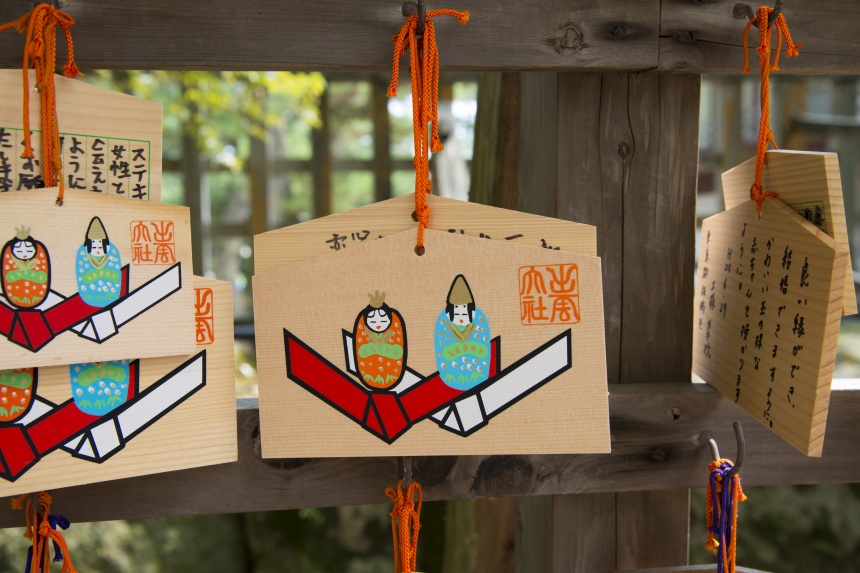
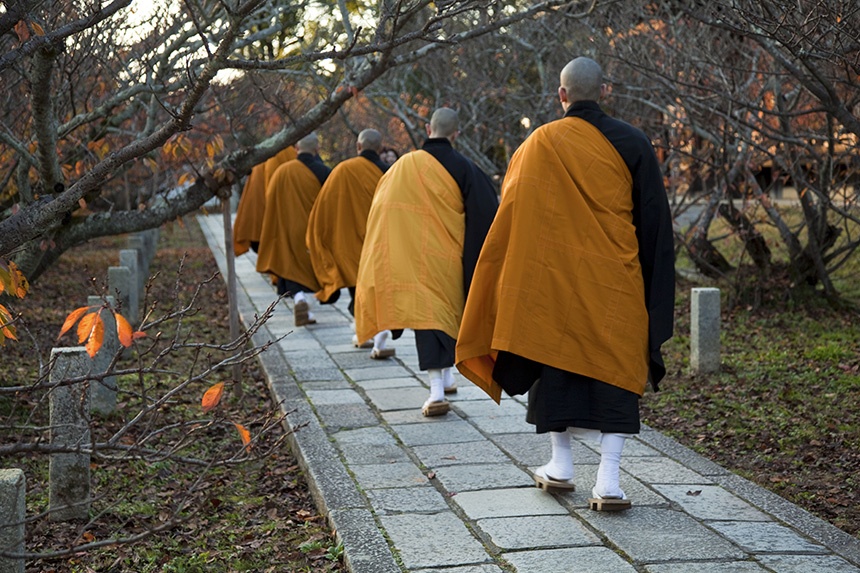
A torii ritual gate with two upper rungs points the way to the temple. These designs are the main hallmarks of Shinto. Such gates are not placed in front of Buddhist temples. But Shintoists believe that, passing under torii, you find yourself in the territory of deities, where you can communicate with spirits.
The path to the top of knowledge is carefully lined with beautiful lanterns. A stream gurgles along the stone path, snow falls from the sky in flakes. Not a soul around. The entourage looks so picturesque that it resembles a picture from the fairytale cartoon by Hayao Miyazaki, the main popularizer of Shinto ideas.
After all, what did Miyazaki essentially do? He showed the world of Japanese folk religion through fantastic stories told on behalf of the child heroes. In his cartoons "My Neighbor Totoro" or "Spirited Away", various deities, spirits and some unknown geeks live next to the real world of people. But children see them, and adults do not always. The dad from "My Neighbor Totoro" tells his daughters that in childhood he also knew Totoro, but then grew up and no longer meets the guardian of the forest.
On the way to the temple there is a special container with running water and ladles with long handles. Before entering the sanctuary, you are supposed to wash your hands and even rinse your mouth. Mountain ice water invigorates. The last few dozen steps, and in front of the traveler is a sanctuary. On the site, one realizes that the main thing in visiting a sacred place was the path to it. The priest passes silently, nods silently and disappears into some backyard. That's the whole active life of a solitary point of power on a mountain. Not the crowds of tourists, not even the miko attendants. Two men nodding to each other and that's it. What are words for when there are stars in the sky?
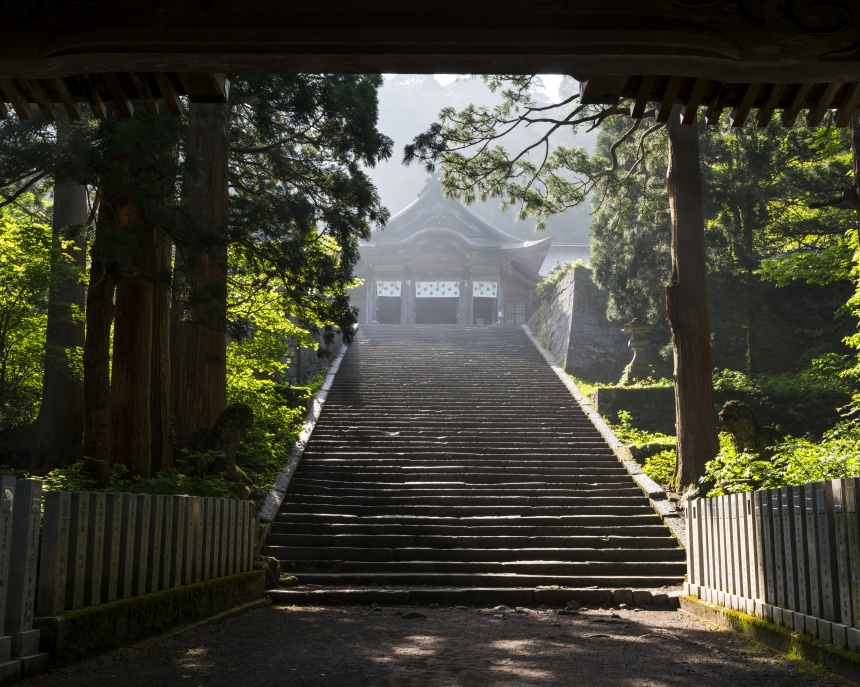
If you go down the path down, and at the fork turn towards other, more magnificent gates, you find yourself in the territory of the Buddhist brothers. The Daisen-ji Temple is located below the Shinto shrine and, as it should be in Buddhism, is richly decorated. There are painted statues of Buddha, and a reclining bronze bull in harness, and a huge bell decorated with painted dragons. The bell can be struck with a log hanging on chains, after throwing a coin "on the temple". The coin clinks, the chains squeak pleasantly, the log knocks on the polished bronze circle. A booming sound rushes over the forest. A heavy cap of snow hoots from somewhere above to the feet. Apparently, here you need to be more careful with the manifestations of force, otherwise how it will manifest itself.
How to get there
Aeroflot and JAL fly from Moscow to Tokyo. Aeroflot's advantage is usually the freer Sheremetyevo airport and the Aeroflot-bonus system. JAL benefits from new Boeing 787 Dreamliners with improved air circulation in the cabin, authentic Japanese cuisine on board, and a free domestic flight on any route.
Details Category: Countries of East Asia Published on February 28, 2014 15:03 Views: 4641Japan is recognized in the world as a great economic power.
The country has one of the highest life expectancies and one of the lowest infant mortality rates.
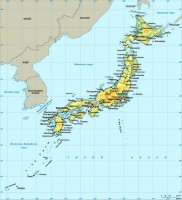
Japan is located in the Japanese archipelago, which consists of 6852 islands, of which not all are inhabited. 97% of the archipelago's area is occupied by the four largest islands: Honshu, Hokkaido, Kyushu and Shikoku.
The state is located in the Pacific Ocean, east of the Sea of \u200b\u200bJapan, China, North and South Korea and Russia.
State symbols
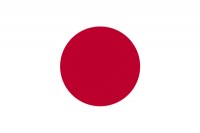
Flag - is a white cloth with an aspect ratio of 2: 3 with a large red circle in the middle, representing the rising sun.Approved August 13, 1999
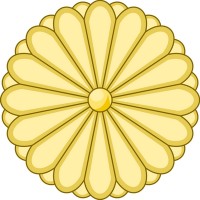
Emblem - the imperial seal of Japan. Symbol in the form of a yellow or orange 16-petal chrysanthemum. Since the XII century. considered the emblem of the Japanese emperors and members of the Japanese imperial family.
The imperial seal is sometimes used as the national emblem, although the country's official emblem does not exist in Japan.
The image of the imperial seal consists of a central circle surrounded by sixteen petals, outside them are surrounded by a second row of petals.
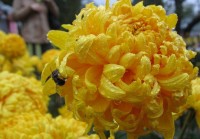
Chrysanthemum - the symbol of Japan. The chrysanthemum is depicted on the coins and the state emblem of Japan; one of the country's highest awards is the Order of the Chrysanthemum. The Supreme Order of the Chrysanthemum is the oldest of the Japanese orders.
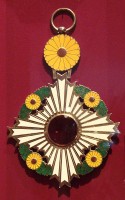
The Chrysanthemum Festival in Japan is a special ritual: when performing it, one must admire every shade of inflorescences, while deeply reflecting on the path traveled and the meaning of life. Ancient Japanese poets sang chrysanthemums in their poems.
State structure of modern Japan
Form of government - a constitutional monarchy.
Head of state - the emperor.
Head of governmenta - prime minister. Appointed by the emperor.
Capital - Tokyo.
Largest cities - Tokyo, Yokohama, Osaka, Sapporo.
Official language - Japanese. In most private and public schools, Japanese and English are taught to students.
Territory - 377 944 km².
Population - 127 253 075 people. About 90% of Japanese people live in cities. About 98% of the population is actually Japanese.
Currency - yen.
Climate - conditionally divided into six climatic zones: Hokkaido - a zone of low temperatures (long frosty winters and cool summers). IN Sea of \u200b\u200bJapan The northeast seasonal wind brings heavy snowfalls in winter. In summer, it is less warm than in the Pacific Ocean, but sometimes extremely high temperatures are observed due to the phenomenon of the foehn (strong, gusty, warm and dry local wind blowing from the mountains to the valleys).
Climate Central Upland - a typical island with a wide range of temperatures in winter and summer, at night and during the day.
Inland Sea of \u200b\u200bJapan - The climate is temperate: the mountains in the Chugoku and Shikoku regions block seasonal winds.
Pacific zone - cold winters with rare snowfalls; usually hot and humid summers during the southeast seasonal wind.
Southwest Islands - a zone with a subtropical climate. Winter is warm, summer is hot. Typhoons are frequent.
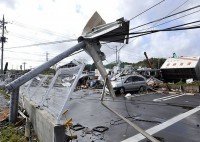
Typhoon Melor in Japan
Religion - the country is characterized by a religious syncretismwhen believers profess several religions at once. The overwhelming majority of Japanese profess Shintoism (83.9%) - based on the animistic beliefs of the ancient Japanese, numerous deities and spirits of the dead are objects of worship. Experienced in its development the significant influence of Buddhism (83.9%); and Buddhism (71.4%). Confucianism, Zen Buddhism and Amidaism are also professed. Christian 2% of the population.
Economy - Japan has a large manufacturing capacity, it is the largest manufacturer of motor vehicles, electronics, machine tools, steel, ships, chemicals, textiles and food. Japanese workers receive the highest hourly wages in the world. The country has a low unemployment rate.
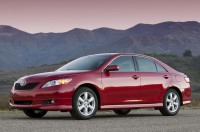
Major companies: Toyota, Nintendo, NTT DoCoMo, Canon, Honda, Takeda Pharmaceutical, Soy, Nippon Steel, Tepco, Mitsubishi and 711.Export: motor vehicles, electronics and chemicals.Import: machinery and equipment, fossil fuels, food (especially beef), chemicals, textiles and industrial raw materials.
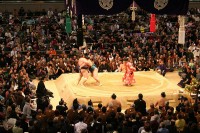
Sumo tournament
Sport – sumo is considered the national sport in Japan and the third most popular professional sport. Some types of martial arts, judo, kendo and karate are popular. The most popular professional sport is baseball. Football is gaining popularity. Other popular sports include golf, boxing, motor sports and wrestling.
Japan hosted the 1964 Summer Olympics and the 1998 and 1972 Winter Olympics.
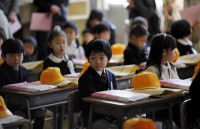
Education - since 1947 compulsory education in Japan consists of primary school and secondary school - 9 years old, age from 6 to 15 years. Almost all children continue their education in a 3-year high school (having passed the entrance exam), tuition is paid, although not very expensive. About 75.9% of secondary school graduates continue their studies at universities, colleges, vocational schools. The two best universities in Japan are Tokyo and Kyoto.
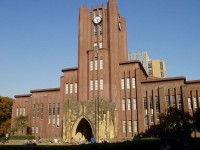
University of Tokyo
Higher education institutions (mostly private and with high tuition fees) are eligible for secondary school graduates. Vocational education is carried out in state technical colleges or special training schools owned by large companies, after which graduates are provided with employment.
Administrative division - 47 prefectures. Each prefecture is governed by a prefect (in Hokkaido - by a governor), it has its own legislative and administrative apparatus. Prefectures are often grouped into regions that are not administrative divisions. Prefectures are divided into counties, special cities, counties, townships and villages. The cities with a population exceeding 500 thousand people belong to special cities.
Military establishment - The Japanese constitution prohibits the country from having its own army and participating in wars. The modern armed forces of Japan are called self-defense forces. The Self-Defense Forces are comprised of land, sea and air forces. The Japan Self-Defense Forces are recruited on a voluntary basis.
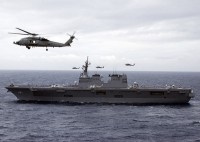
Hyuga is one of the two types of helicopter carriers of the Japanese Naval Self-Defense Forces.
Nature
Japan is located on a large stratovolcanic archipelago located off the Pacific coast of Asia and part of the Pacific volcanic ring of fire. The country has up to 1,500 earthquakes of magnitude 4 to 6 every year. Small earthquakes occur every day in different parts countries causing buildings to shake. Japan also experienced several major earthquakes: September 1, 1923 - the great Kanto earthquake (magnitude 8.3); January 17, 1995 - earthquake in Kobe (magnitude 7.3); March 11, 2011 - earthquake off the northeast coast, one of the largest (magnitude 9). The earthquake caused a devastating tsunami.
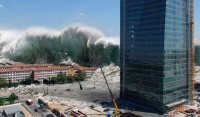
The Fukushima-1 nuclear power plant was hit by the waves, an accident occurred on it, which became the most serious after the accident at the Chernobyl nuclear power plant. Pacific typhoons are another natural hazard.
Uplands and low and medium-high mountains make up over 75% of the country's territory. There are practically no minerals in Japan, with the exception of small reserves of coal, iron ore, sulfur, and some others.
Flora
More than 66% of the country is covered with forests. There are over 700 species of trees and shrubs in Japan and about 3,000 species of herbs.
Coniferous forests of spruce and fir with dense thickets of bamboo grow predominantly in Hokkaido. Above - thickets of dwarf cedar and birch forest. In the southern parts of the island, deciduous deciduous forests prevail.
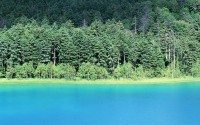
Deciduous broadleaf forests also grow on Honshu: oak, beech, maple, chestnut, ash, linden. They rise to an altitude of 1800 m, and coniferous forests end at an altitude of 1800-2000 m.
The lower parts of the slopes of the Honshu Mountains and the slopes of the mountains on the Shikoku and Kyushu islands up to a height of 800 m are covered with evergreen subtropical forests with an abundance of lianas.
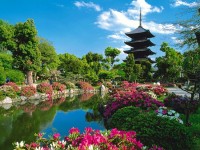
In the extreme south of Kyushu and the Ryukyu Islands, up to a height of 300 m, monsoon forests are common: palms, ficuses, tree ferns, bamboo, orchids.
Fauna
The country has 270 species of mammals, about 800 species of birds and 110 species of reptiles. The seas are home to over 600 species of fish and over 1000 species of molluscs.
On the island of Hokkaido there are brown bear, sable, ermine, weasel. Wolves, foxes, Asiatic badgers, raccoon dogs, otters and hares live here, as well as on the island of Honshu.
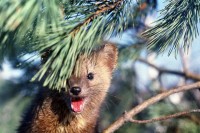
South of the Sangar Strait, white-breasted bears, Japanese macaques, antelopes, and giant salamanders live. To the south of the Togar Strait there is a tropical fauna.

Birds of Japan: woodpecker, thrush, titmouse, swallow, starling, black grouse, cranes, stork, hawk, eagle, owls, and there are many seabirds off the coast.
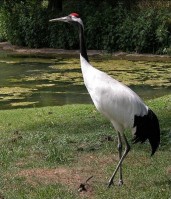
The most abundant freshwater fish are carp, catfish, eel, lampreys; eels and salmon, including trout, are artificially bred. Commercial fish of coastal waters: Pacific herring, ivashi, tuna, cod, flounder, as well as crabs, shrimps, oysters.
Culture
In the Jomon era (from 13,000 BC to 300 BC, corresponds to the Mesolithic and Neolithic), the ancestors of the Japanese people began to migrate from the mainland to the Japanese archipelago. At this time, Japanese culture was born. Contemporary Japanese culture was strongly influenced by Asian countries (especially China and Korea), Europe and North America.
Feature japanese culture is its long development during the period of complete isolation of the country from the rest of the world during the reign of the Tokugawa shogunate, which lasted until the middle of the 19th century - the beginning of the 20th century. The period of Emperor Meiji that followed was marked by Japan's refusal of self-isolation and its establishment as a world power.
The country's isolated territorial position has also influenced the culture and mentality of the Japanese. Natural phenomena (frequent earthquakes and typhoons) formed a peculiar attitude of the Japanese towards nature as a living creature. A feature of the national character of the Japanese is the ability to admire the momentary beauty of nature. This is reflected in many forms of art.
Literature
The first Japanese written monuments are considered to be the collection of Japanese myths and legends "Kojiki" ("Records of the deeds of antiquity") and the historical chronicle "Nihon Seki", created in the 7th-8th centuries. Both works were written in Chinese, but with modifications to convey the Japanese names of the gods and other words.
Types of poetic forms are widely known outside Japan. haiku (hokku)... One of the most famous representatives of the genre was and still remains Matsuo Basho... Japanese haiku consists of 17 syllables that make up one column of hieroglyphs. When translated into modern languages, haiku is written as a three-line. The central place is occupied by a natural image, explicitly or implicitly correlated with human life. The art of writing haiku is the ability to describe a moment in three lines. To say a lot using only a few words is the main principle of haiku.
On a bare branch
the crow sits alone.
Autumn evening. (M. Basho)
Popular waka (Japanese song) and its variety tank (short song).
Famous Japanese writers: Kobo Abe, Ryunosuke Akutagawa, Kenzaburo Oe, Haruki Murakami, Ryu Murakami, Issa Kobayashi.
Kobo Abe (1924-1993)
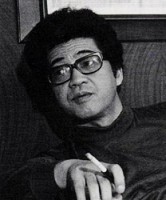
Prominent Japanese writer, playwright and screenwriter, one of the leaders of the Japanese post-war avant-garde in art. The main theme of his work is a person's search for his own identity in modern world... Based on the novels "The Woman in the Sands", "Alien Face" and "The Burnt Map", films were made by director Hiroshi Tesigahara in the 1960s.
Haruki Murakami (born 1949)
![]()
Contemporary popular Japanese writer and translator. Author of the books The Rat Trilogy (Listen to the Wind Song, Pinball 1973, Sheep Hunt), Norwegian Forest, Dance, Dance, Dance, etc. He lived in various countries of the world. “I went to the States for almost five years, and suddenly, while living there, all of a sudden I wanted to write about Japan and the Japanese. Sometimes about the past, sometimes about how everything is there now. It's easier to write about your country when you're far away. From a distance, you can see your country as it is. Before that, I somehow didn't really want to write about Japan. I just wanted to write about myself and my world. "
Painting
Japanese painting is one of the most ancient and sophisticated Japanese arts, with a wide variety of genres and styles.
As in literature, the leading place belongs to the depiction of nature.
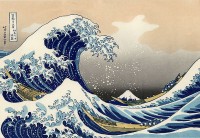
Katsushika Hokusai "The Great Wave off Kanagawa"
In the XIV century. monochrome watercolor develops, and in the first half of the 17th century. begin to produce woodcuts depicting geisha, popular kabuki theater actors and landscapes.
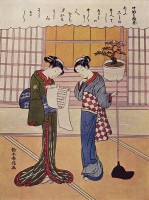
Suzuki Harunobu "Two women on the veranda"
In Japan calligraphy considered one of the arts. Calligraphy is taught in schools along with drawing.
Sculpture
The oldest art in Japan. The history of sculpture is associated with the emergence of Buddhism in the country. Traditional Japanese sculpture is most often statues of Buddhist religious concepts. One of the most ancient sculptures in Japan is the wooden statue of Amitabha Buddha at the Zenko-ji Temple.
Wood was used as the main material for the sculptures. The statues were often varnished, gilded, or brightly colored. Bronze or other metals were used as the material for the statues.
Arts and crafts
Traditional Japanese dolls (kokeshi, daruma (tumbler doll), etc.
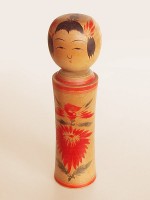
Netsuke (miniature sculpture)
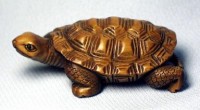
(folding paper figures)
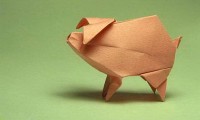
(creation of compositions from cut flowers, shoots)
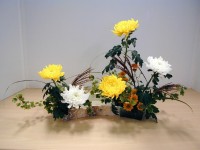
(the art of growing a miniature replica of a real (sometimes bonsai) tree)
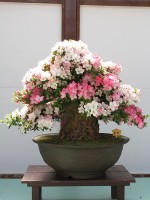
Blooming rhododendron
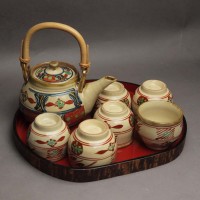
Hand-painted fabrics
(Japanese national technique of embroidery on balls)
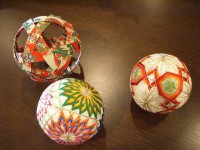
Cinema
He received recognition and authority only at the end of the 30s of the XX century. In the 50-60s, the active development of Japanese cinema began. These years are considered the "golden age" of Japanese cinema. During this period, the genres of historical, political cinema, action films and science fiction appeared; in terms of the number of films released, Japan occupied one of the first places in the world. Famous filmmakers of this period: Akira Kurosawa, Kenji Mizoguchi, Shohei Imamura. The actor Toshiro Mifune, who played in almost all of Kurosawa's films, becomes famous outside the country.
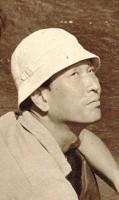
Akira Kurosawa
In the 1990s, actor and director Takeshi Kitano gains wide popularity both in Japan and abroad. Notable directors: Hayao Miyazaki, Makoto Shinkai.
Japanese are very popular anime and manga (Japanese comics).
Clothing in Japan is popular both European and national (yukata, or kimono), hakama (long wide pants in a fold), geta (sandals), obi (belt).
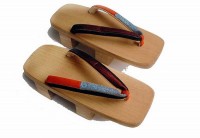
UNESCO World Heritage Sites in Japan
There are 17 items in the list, so we will tell you only about a few.
All objects: Buddhist Monuments in Horyu-ji District, Himeji Castle, Yaku Island, Forests in Shirakami-Sanchi Mountains, Historic Monuments of Ancient Kyoto, Historical Villages of Shirakawa-go and Gokayama, Hiroshima Peace Memorial, Itsukushima Shrine, Historic Monuments of Ancient Nara City, Shrines and temples of the city and Nikko National Park, Gusuku and other architectural monuments of the Ryukyu Kingdom, Sacred sites and pilgrimage routes in the mountains of the Kii Peninsula, National Park on the Shiretoko Peninsula, Iwami Ginzan Silver Mine, Historical Monuments of Hiraizumi, Bonin Islands, Mount Fuji.
Himeji Castle (1333-1346)
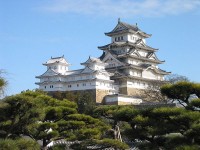
Egret castle
One of the oldest surviving castles in Japan, and the most popular among tourists. In total, the castle complex includes 83 buildings, almost all of them are built of wood. At the foot of the castle is the town of the same name.
The construction of the castle began in the middle of the XIV century. It got its name for its special refinement of forms and elegance, reminiscent of a beautiful snow-white bird. A high stone foundation, whitewashed walls, loopholes, and embrasures have become part of the arsenal of techniques of Japanese architecture.
Hiroshima Peace Memorial
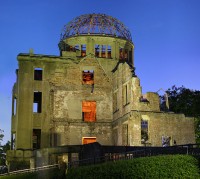
The Gembaku Dome was the Exhibition Center of the Hiroshima Chamber of Commerce before World War II. As a result of the atomic bombing of 1945, it was badly damaged, but survived, despite the fact that it was only 160 meters from the epicenter. The building partially collapsed from the shock wave and burned out from the fire; all people who were in the building at the time of the explosion were killed. After the war, the Dome was fortified and became the most famous exhibit associated with the atomic explosion.
The building was designed in 1915 by the Czech architect Jan Letzel, in a European style that was unusual for the Japanese at that time.
Next to the Atomic Dome is the Peace Memorial Park, located on an island almost at the epicenter of the explosion. In the park there is a Memorial Museum, several monuments, a ritual bell and a cenotaph - a collective tombstone for those killed in the atomic bombing.
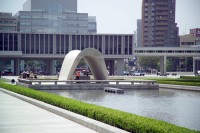
- a gravestone in a place that does not contain the remains of the deceased, a kind of symbolic grave.
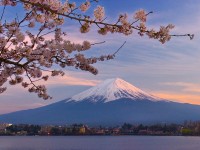
An active stratovolcano on the island of Honshu, 90 kilometers southwest of Tokyo. The height of the mountain is 3776 m, it is the highest mountain in Japan. The volcano is considered to be weakly active, the last eruption was in 1707-1708.
The mountain has an almost perfect conical shape and is considered sacred, serves as an object of tourism, as well as a religious pilgrimage for Buddhist and Shinto cults. Fuji has been a popular theme in Japanese art for centuries.
At the top of Fuji there is a Shinto shrine, post office and weather station. The surroundings of the mountain are part of the Fuji-Hakone-Izu National Park.
Other sights of Japan
Tokyo Disneyland
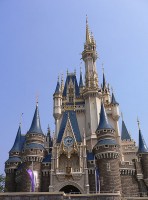
An amusement park with an area of \u200b\u200b465,000 m², located near Tokyo. Opened in 1983, Disneyland also includes a park, hotels and a shopping complex. This is the first Disney park built outside the United States.
Tokyo Imperial Palace

Palace of the Emperor of Japan in a special area of \u200b\u200bTokyo. Located in the former Edo Castle. Used since the second half of the 19th century. as the residence of the Emperors and the Imperial Court.
The total area with gardens is 7.41 sq. km. The architecture of the buildings in the complex is mixed: some buildings are built in European style and others in traditional style.
Ueno Zoo
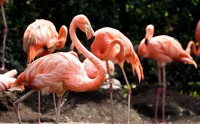
The oldest zoo in Japan, one of the most famous and most visited. Opened in 1882. Now there are over 2600 animals in it.
Rainbow Bridge (Tokyo)
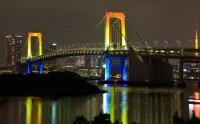
A suspension bridge across northern Tokyo Bay, connecting the Shibaura shipyard to Odaiba Island. The bridge was opened in 1993. Its length is 570 m.
The pylons supporting the bridge are painted in white color... The cables holding the bridge have lamps that illuminate the bridge in red, white and green every night.
The rainbow bridge has two tiers: one provides traffic for vehicles, and the other for the movement of subway cars. There are also pedestrian walkways and observation platforms on the bridge.
History
The first signs of the settlement of the Japanese archipelago date back to the 40th millennium BC. e. The Japanese as a nation are first mentioned in the Chinese historical chronicle of Hanshu. The Chinese called the Japanese archipelago "land of Wa". In 538, Buddhism came to Japan (from the Korean state of Baekje, with which all-round ties were developing at that time.
In the VIII century. a strong centralized Japanese state appears, concentrated in the imperial capital of Heijo-kyo on the territory of modern Nara (a city in Japan). This period is characterized by the creation of the first historical chronicles and the flourishing of culture.
Japanese feudalism is characterized by the emergence of a ruling class of warriors, the "samurai department." Samurai - secular feudal lords, ranging from large sovereign princes to minor nobles; in the narrow and most frequently used sense - the military-feudal class of small nobles, i.e. A samurai is a service person.
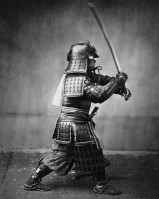
Samurai. The photo
Japan's interaction with Western countries began in 1543, when Portuguese sailors and later Jesuit missionaries and Dutch traders reached the shores of Japan.
In 1854, the American Commodore Matthew Perry, who arrived on the Black Ships (the name given to European and American ships that arrived in Japan between the 15th and 19th centuries), forced Japan to end its isolation policy. With these events, Japan entered the era of modernization.
At the beginning of the XX century. the growth of militarism and expansionism began in the country. Japan took part in the First World War on the side of the Entente, expanding its political influence and territory. In 1931, Japan occupied Manchuria and created the puppet state of Manchukuo. In 1933, the League of Nations condemned her actions, and Japan defiantly left the League. In 1936, Japan signed the Anti-Comintern Pact with Nazi Germany, and in 1941 joined the Axis countries (an aggressive military alliance of Germany, Italy, Japan and other states, which was opposed by the anti-Hitler coalition during World War II). At the same time, Japan signed a Neutrality Pact between the USSR and Japan, pledging to respect the territorial integrity and inviolability of the Mongolian People's Republic and Manchukuo.
In 1937, Japan invades other parts of China, starting the second Sino-Japanese War (1937-1945), after which the United States imposes an oil embargo on it. In 1941, Japan attacked Pearl Harbor (Hawaii) and declared war on the United States and Great Britain. This led to the involvement of the United States in World War II. The Empire of Japan conquered Hong Kong, the Philippines and Mallacca, but in 1942 defeat at the Coral Sea took away its maritime advantage. After the atomic bombings of Hiroshima and Nagasaki on August 6 and 9, 1945 by US aircraft, as well as after the USSR joined military operations against Japan, it signed on September 2, 1945 the Act of Unconditional Surrender.
Atomic bombings of Hiroshima and Nagasaki
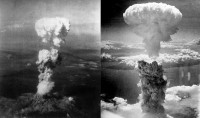
Hiroshima and Nagasaki
The atomic bombings of Hiroshima and Nagasaki (August 6 and 9, 1945) are the only examples of the military use of nuclear weapons in the history of mankind. The officially announced goal is to hasten Japan's surrender.
On the morning of August 6, 1945, the American B-29 "Enola Gay" bomber, named after the mother of the crew commander, Colonel Paul Tibbets, dropped on the Japanese city of Hiroshima the atomic bomb "Kid" with the equivalent of 13 to 18 kilotons of TNT. Three days later, on August 9, 1945, the Fat Man atomic bomb was dropped on the city of Nagasaki by a pilot Charles Sweeney, commander of a B-29 bomber. The total death toll ranged from 90 to 166 thousand people in Hiroshima and from 60 to 80 thousand people in Nagasaki.
The role of the atomic bombings in the surrender of Japan and the ethical justification of the bombings themselves are still hotly debated: the proponents of the bombings claim that they caused the surrender of Japan and prevented massive losses on both sides during the invasion of Japan. Opponents of the bombings argue that they were simply an addition to the already fierce conventional bombings, they were not militaryly necessary, and, unlike other methods of warfare, were immoral in nature and constituted a war crime or were a form of state terrorism.
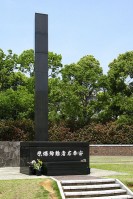
Black obelisk at the epicenter of the explosion in Nagasaki
P.S.
Tibbets had no regrets about the decision to drop the bomb. In a 1975 interview, he said, "I am proud that I was able, from nothing, to plan the operation and execute it as flawlessly as I did ... I sleep peacefully every night." In March 2005, he stated, "If you put me in the same situation, then yes, damn it, I will do it again."
All of my life Sweeney fiercely defended the necessity of atomic bombing of Japan in front of students at American colleges and universities.
In 1947, Japan adopted a new pacifist constitution and embarked on a course towards liberal democracy. Pacifism is an antiwar social movement that opposes war and violence by peaceful means, mainly by condemning their immorality. In 1956, Japan joined the UN. Later, the country achieved record economic growth.
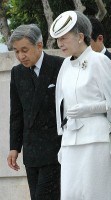
Emperor Akihito and Empress Michiko










